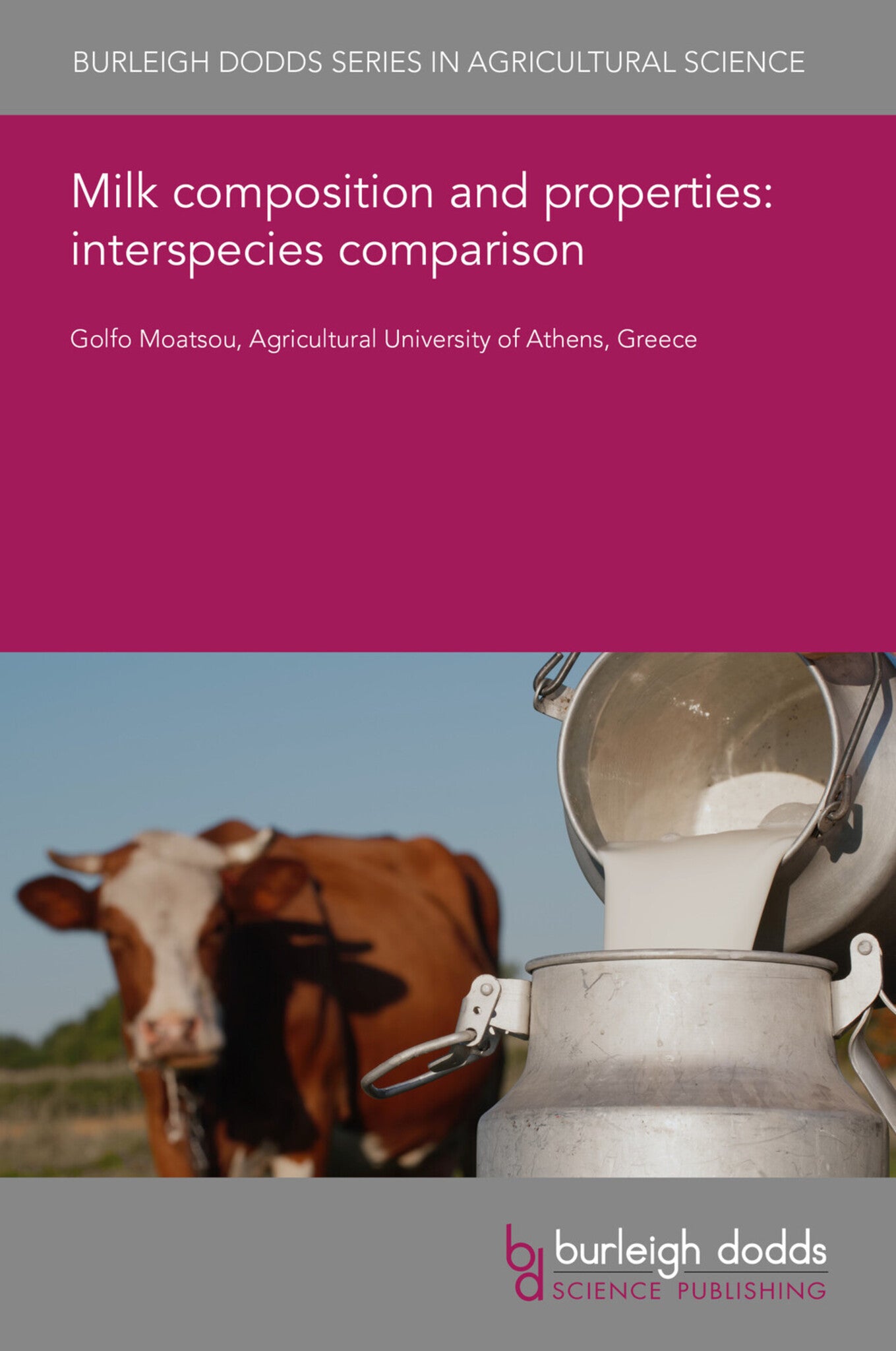We're sorry. An error has occurred
Please cancel or retry.
Milk composition and properties: interspecies comparison
Regular price
£25.00
Sale price
£25.00
Regular price
£25.00
Unit price
/
per
Sale
Sold out
Re-stocking soon
The present chapter is a comparative presentation of the characteristics of milk produced from ruminants – cow, buffalo, goat, sheep, yak, camel - and equids - donkey and horse -. Emphasis is on to...
Read More

Some error occured while loading the Quick View. Please close the Quick View and try reloading the page.
Couldn't load pickup availability
- Format:
-
14 March 2022

The present chapter is a comparative presentation of the characteristics of milk produced from ruminants – cow, buffalo, goat, sheep, yak, camel - and equids - donkey and horse -. Emphasis is on topics associated with technological and nutritional/biological performance of milk, i.e., fat globule, casein micelle, enzymes, minor compounds. The detailed composition of the complex lipid, protein and mineral fractions of each milk kind is reviewed compiling recent and fundamental publications. The profile of minor components with nutraceutical potential, i.e., nucleotides, polyamines, oligosaccharides, vitamins, is discussed. In some cases, similarities with human milk, technological performance or digestibility are reported. Although the number of reports is not similar for all species, it is evident that within the group of ruminants, goat and camel milk exhibit the important particularities in their lipid, protein and serum fraction. Equids milk is largely differentiated from ruminants counterpart regarding composition, technological behaviour and potent biofunctionality.

Price: £25.00
Publisher: Burleigh Dodds Science Publishing
Imprint: Burleigh Dodds Science Publishing
Series: Burleigh Dodds Series in Agricultural Science
Publication Date:
14 March 2022
ISBN: 9781801464345
Format: eBook
BISACs:
TECHNOLOGY & ENGINEERING / Agriculture / Animal Husbandry, Dairy farming, TECHNOLOGY & ENGINEERING / Agriculture / Sustainable Agriculture, Sustainable agriculture, Animal husbandry

1 Introduction 2 Lipids: neutral, polar and unsaponifiable lipids 3 Nitrogenous components: proteins, enzymes and non-protein nitrogen compounds 4 Mineral fraction: concentrations and distribution 5 Serum compounds: lactose, oligosaccharides and vitamins 6 Conclusion and future trends 7 References



